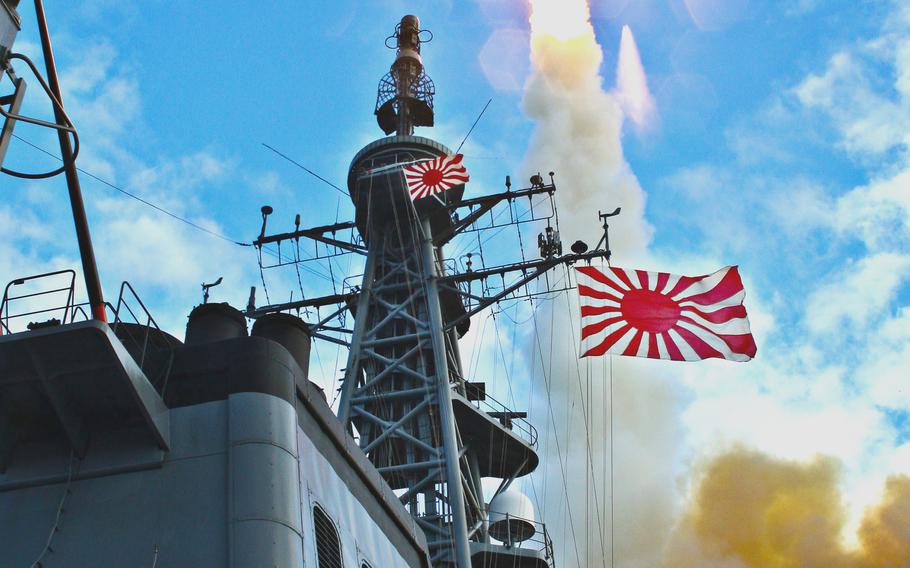
An SM-3 missile, the type fired by the Aegis Combat System, departs the Japanese destroyer JS Kirishima during a test at Barking Sands, Kauai, Hawaii, on Oct. 28, 2010. (U.S. Navy)
TOKYO - Japan’s Cabinet on Friday approved the country’s largest-ever defense budget, a significant increase over current spending, for the coming fiscal year.
The fiscal 2024 defense budget amounts to 7.95 trillion yen, or about $55.9 billion, a 16.5% increase over this year’s budget, which was a record-high increase from the previous year, according to the budget document released by the Ministry of Defense.
Japan has seen 12 consecutive increases in defense spending, according to the document. It is also the second year since the three defense policy documents, National Security Strategy, National Defense Strategy, and Defense Buildup Program, have been adopted, which called for strengthening Japan’s fundamental defense capability.
A government white paper this year stressed diplomatic solutions to conflicts but said that Japan must also prepare to defend itself with increased deterrence.
“The international society is facing the greatest challenge since the end of the war, with existing order facing serious challenges and entering a new era of crisis,” the budget document stated.
Japan aims to gradually increase its defense spending to 8.9 trillion yen, or about $62.5 billion, by fiscal 2027, according to the document.
According to next year’s budget, Japan will continue to work to strengthen the core areas of its defense, such as standoff defense capabilities and integrated air and missile defense, including Aegis-equipped ships, and improve mobility, secure ammunition and strengthen defense facilities.
The approved budget includes 734 billion yen, or about $5.16 billion, for stand-off defense capability, such as 32.3 billion yen to develop new surface-to-ship and surface-to-surface guided missiles, new items in the budget.
It also allocated about 1.25 trillion yen, or about $8.78 billion, for integrated air and missile defense capabilities to effectively respond to increasingly diverse and complex airborne threats.
This includes 373 billion yen, or about $2.62 billion, for two destroyers equipped with the Aegis system, an integrated radar and missile system capable of air, surface and underwater defense. The destroyer plan replaces a previously scrapped plan for a land-based Aegis Ashore missile defense system. The destroyers will be deployed in 2027 and 2028, according to the document.
Also, 75.7 billion yen, or about $532.4 million, is set aside for joint development of a glide phase interceptor with the United States, an agreement reached in August.
The budget allocates 112 billion yen, or about $787.9 million, to acquire eight F-35As and 128.2 billion yen, or about $901.7 million, for seven F-35Bs, according to the document. A temporary F-35B squadron will be created at Japan’s Nyutabaru Air Base in Miyazaki prefecture next fiscal year.
Although no specific amount is listed, the budget also creates a permanent joint command, headed by a four-star officer, with about 240 personnel overseeing three Self-Defense Force branches in central Tokyo by March 2025.
Japan set a defense spending goal of about 43 trillion yen, or about $302 billion, between 2023 and 2027. The defense budget is expected to peak at about 8.9 trillion yen, or about $62.5 billion, in fiscal 2027. The Japanese fiscal year begins on April 1.
This year’s defense budget, the first under the buildup program, is a record-high 6.8 trillion yen, or about $47.9 billion, a 26.3% increase from the previous year.